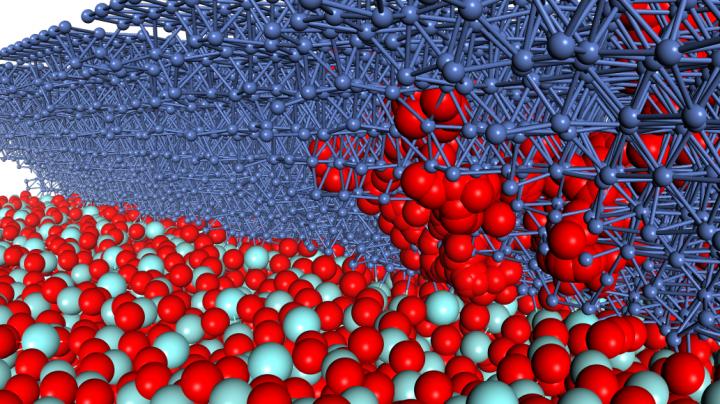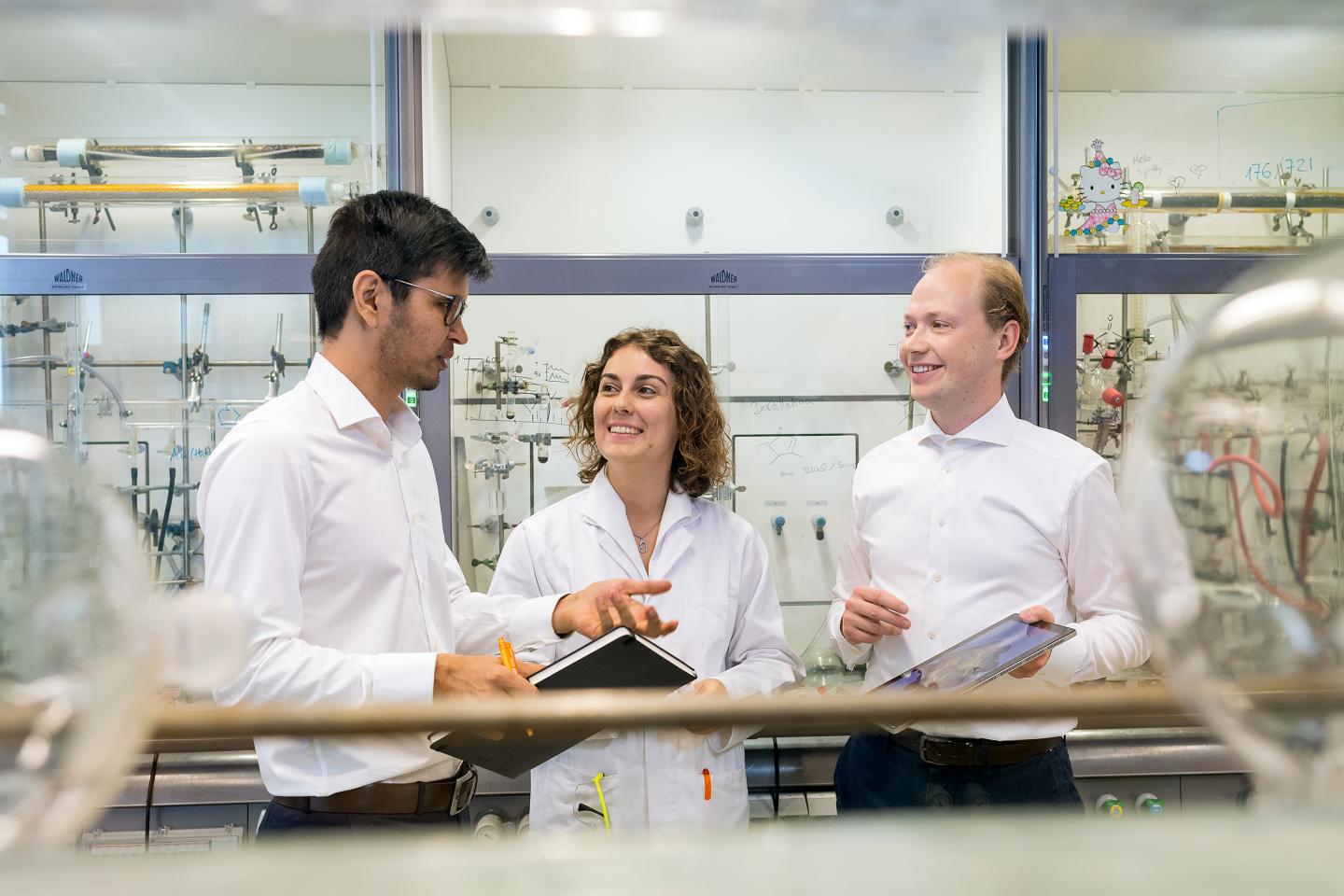
The initial positions of the atoms in this computer model of a solid-oxide fuel cell were based on observations of the actual atomic configuration using electron microscopy. Simulations using this model revealed a previously unreported reaction (red path) in which an oxygen molecule from the yttria-stabilized zirconia layer (layer of red and light blue balls) moves through the bulk nickel layer (dark blue balls) before forming OH on the nickel surface.

An interdisciplinary research team at the Technical University of Munich (TUM) has succeeded in optimizing the size of platinum nanoparticles for fuel cell catalysis so that the new catalysts are twice as good as the currently best commercially available processes. The picture shows the first authors: Dr. Batyr Garlyyev, Kathrin Kratzl, and Marlon Rueck (f.l.t.r.).